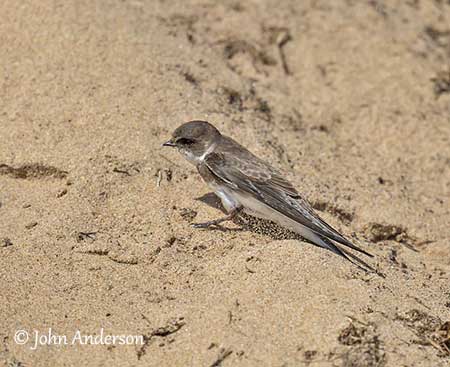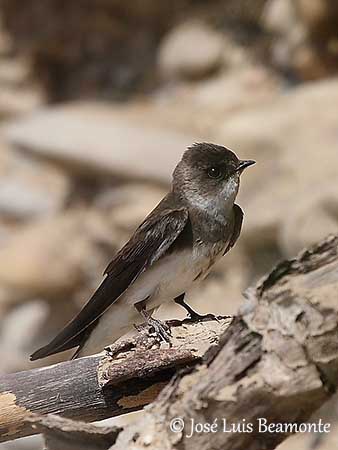
Fr: Hirondelle de rivage
Ang: Sand Martin – Collared Sand Martin – Bank Swallow
All: Uferschwalbe
Esp: Avión Zapador
Ita: Topino
Nd: Oeverzwaluw
Sd: Backsvala
Photographers:
John Anderson
John Anderson Photo Galleries
José Luis Beamonte
Pájaros de España
Steve Garvie
RAINBIRDER Photo galleries & Flickr Rainbirder
Tom Grey
Tom Grey's Bird Pictures & Tom Grey's Bird Pictures 2
Eduardo Andrés Jordan
MIS AVES – AVES DE ARGENTINA
Otto Plantema
Trips around the world
Ingo Waschkies
Bird Photography
Text and slideshow by Nicole Bouglouan
Sources:
HANDBOOK OF THE BIRDS OF THE WORLD Vol 9 - by Josep del Hoyo - Andrew Elliot - David Christie - Lynx Edicions - ISBN: 8487334695
THE HANDBOOK OF BIRD IDENTIFICATION FOR EUROPE AND THE WESTERN PALEARCTIC by Mark Beaman, Steve Madge - C. Helm - ISBN: 0713639601
L’ENCYCLOPEDIE MONDIALE DES OISEAUX - Dr Christopher M. Perrins - BORDAS - ISBN: 2040185607
ENCYCLOPEDIE DES OISEAUX DE FRANCE ET D’EUROPE – de Peter Hayman et Rob Hume - Flammarion – ISBN : 2082009920
THE COMPLETE BOOK OF BRITISH BIRDS – Written by “Royal Society for the Protection of Birds” experts - Préface de Magnus Magnusson - Michael Cady- Rob Hume Editors - ISBN: 0749509112
Pájaros de España (JL Beamonte)
Wikipedia, the free encyclopaedia
UMR BOREA – Biologie des Organismes et Ecosystèmes Aquatiques
Morpho-sedimentology of coastal natural sites colonized by Sand Martin (Riparia riparia)
Environment Agency
Artificial Bank Creation for Sand Martins and Kingfishers
Sand Martin or Collared Sand Martin or Bank Swallow
Riparia riparia
Passeriformes Order – Hirundinidae Family
INTRODUCTION:
The Sand Martin is included in the subfamily Hirundininae which gathers the typical swallows and martins of the family Hirundinidae.
The brown-and-white sand martins of the genus “riparia” are fairly widespread. There are five species with four in the Old World, and only one, the Sand Martin, in both New and Old Worlds.
The Sand Martin is commonly known as the Bank swallow in the Americas, and elsewhere as the Collared Sand Martin or Sand Martin.
This species is a colonial nester and breeds in dense colonies. They dig a tunnel in sand banks and exposed bare earth. Both mates excavate the burrow with the bill, before to remove the earth from the cavity with wings and feet.
The Sand Martin is migratory and moves south after breeding. Its population is currently suspected to be stable.

DESCRIPTION OF THE BIRD:
Biometrics:
Length: 12 cm
Weight: 11-20 g
The Sand Martin is a small brown-and white swallow.
The adult of the nominate race has brownish to grey-brown upperparts. In fresh plumage, the feathers have pale tips. On upperwing and tail, flight feathers and rectrices are dark brown with indistinct green sheen. The tail is slightly notched.
The underparts are white with a contrasting broad brown breast band, sometimes extending down centre of belly. On the underwing, the coverts are dark brown.
Bill, short legs and feet are dark brown to blackish. The eyes are brown.
Male and female are similar.
The juvenile has pale fringes to upperpart’s feathers. The breast band is less conspicuous. Lores, cheeks, neck sides and chin to breast are washed reddish-brown to buff. The lower underparts are tinged buff or cream. Bill and legs are browner than in adults.
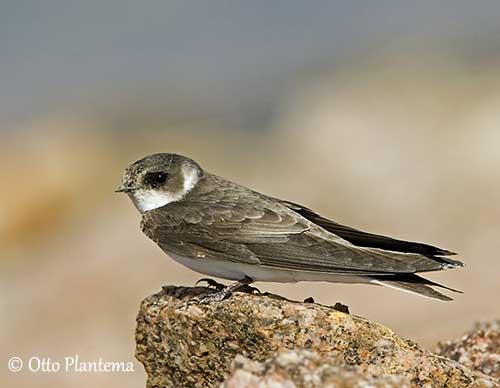
SUBSPECIES AND RANGE:
The Sand Martin has five recognized subspecies.
R.r. riparia (here described and displayed) is found in North America from Alaska and Canada to Texas and NE Mexico. This population winters in South America. It is also found in Eurasia, from Ireland to C Asia. It winters in Africa.
R.r. innominata occurs in SE Kazakhstan and winters in Africa or SW and S Asia. This race is smaller, paler and greyer than nominate, with less distinct breast band.
R.r. ijimae breeds in L Baikal area and C Mongolia, E to Sakhalin, N Japan and Kuril Islands. It winters in SE Asia, including Philippines. This race is darker brown.
R.r. shelleyi is found in Egypt (Nile Valley). It winters S to Sudan and Eritrea. This race is smaller and paler, with narrower breast band.
R.r. eilata is recorded on passage in Israel, but its breeding range is unknown. This race is small, and has buff-brown chin and brown mottling on throat.
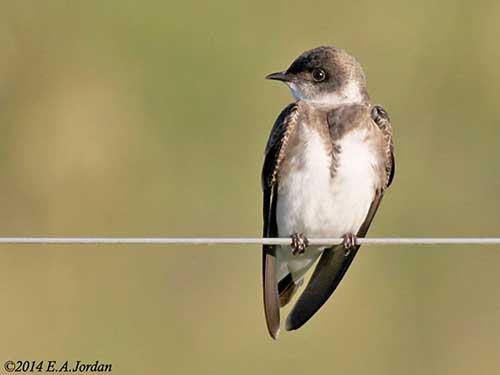
HABITAT:
The Sand Martin is especially found near water. It breeds along coasts, rivers, near lakes, mainly in lowlands and open country, and even close to human habitations. It breeds in banks where it excavates a new burrow. The breeding sites depend largely on erosion creating new sites and destroying other ones.
The Sand Martin forages over water, grassland and farmland, but it usually avoids the densely forested and mountainous areas. On migration, it regularly feeds away from water. It often roosts in reedbeds with other swallow species.
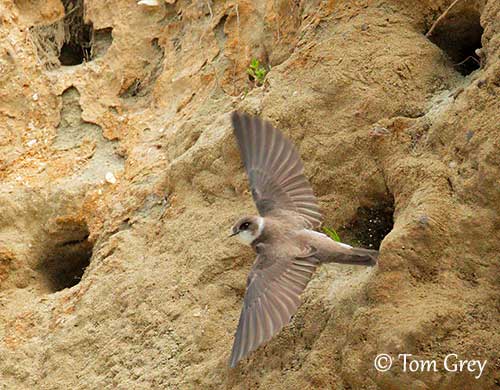
CALLS AND SONGS: SOUNDS BY XENO-CANTO
The Sand Martin’s contact calls include dry, hard “prrit” or “prrip”, and disyllabic “pritit” notes. The alarm calls include both high-pitched and low-pitched notes. The song is a quiet, hoarse twitter, similar to a rapid series of contact calls.
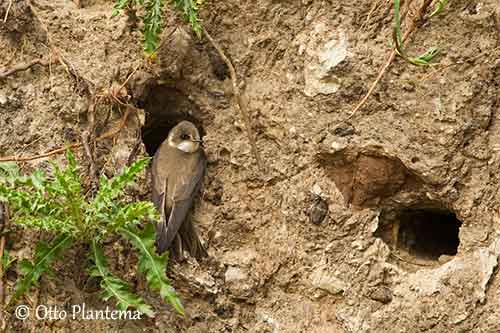
BEHAVIOUR IN THE WILD:
The Sand Martin feeds mainly on insects caught in flight (mainly flies) and spiders caught from the ground or water surface.
It feeds usually over water or open ground, often 15 metres above the ground. It feeds alone or in flocks with other swallow species. The diet may vary, depending on local food sources. In bad weather, it forages by flying low over water.
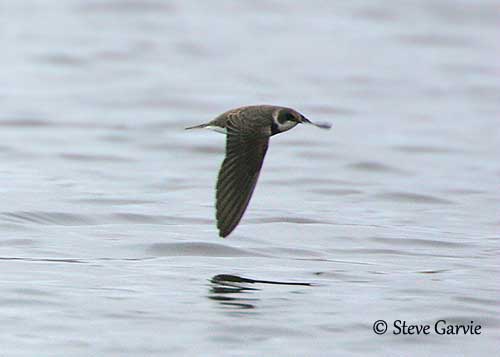
The Sand Martins are monogamous, but extra-pair paternity is sometimes reported. However, a second brood may involve change of mate, nest-hole and colony.
The male starts to dig the burrow up to 30 centimetres. Then, it sings and flies in circle around the entrance, and while perching or hovering in front of the cavity, it enhances the white throat patch. These displays usually attract a female.
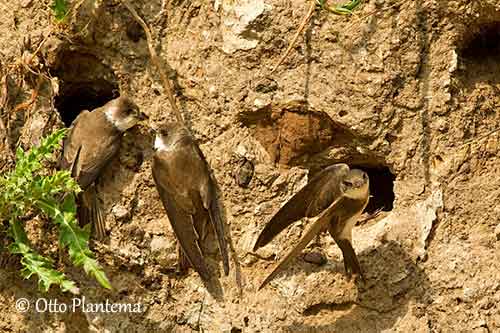
Prior to copulation, the male sings and may quiver the wings. The copulation takes place in nest or elsewhere (ground, wires). Chases between mates are reported too. Then, both adults excavate the burrow up to 100 centimetres deep or more. The nest chamber is at the end. A new burrow is dug each year, although old nests can be reused if not destroyed by the erosion. They nest in colonies, sometimes of several hundred pairs close together depending on available space.
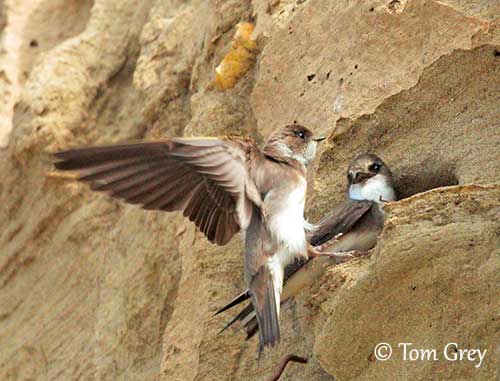
After breeding, mostly in August, they gather in large flocks at nightime roosts and prepare the post-breeding migration. They leave the breeding grounds in late September. The Sand Martin is a long-distance migrant, moving from North America to S Chile and from Eurasia to Sahel zone in Africa, but also E Africa S to Mozambique.
The routes are often along the coasts or over land, usually with short periods above the water for crossing seas.
The Sand Martin performs fast, fluttery flight with shallow, rapid wingbeats.
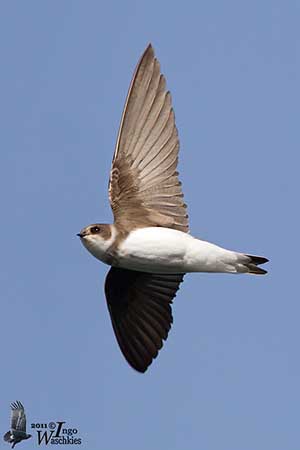
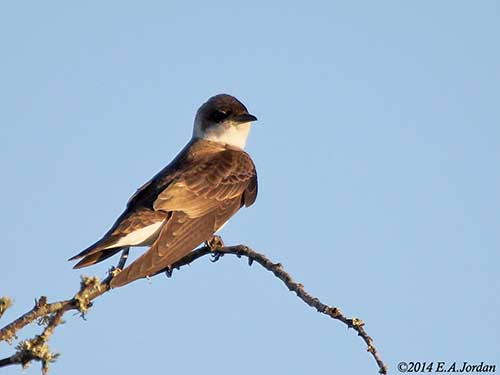
REPRODUCTION OF THIS SPECIES:
The breeding season takes place between late April and August.
The Sand Martin is a colonial breeder and a colony may include up to 100 pairs, and sometimes hundreds or even thousands.
The burrow is excavated by the male first, and once the pair is formed, both adults complete this work. Only a small area is defended around the entrance. The tunnel is dug in compact sand and gravel soils, or in loose sand. The length depends on the soil.
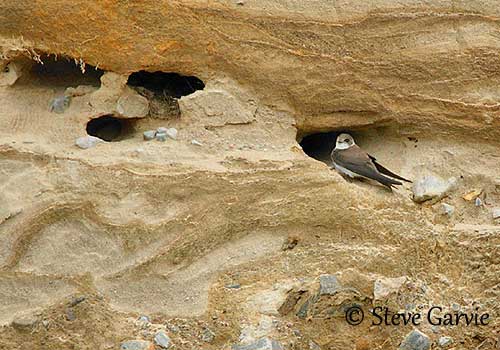
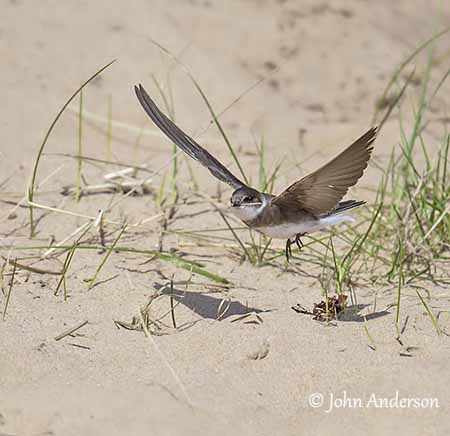
The nesting-site is usually located on river banks, streams or lakes, also on sandy cliffs or dunes, quarries of sand or gravel. Artificial structures can be used too, such as drainage holes, drainpipes or holes in walls. The burrow is about 50-100 centimetres long with a nest-chamber at the end. It is lined with grass, rootlets, leaves and feathers.
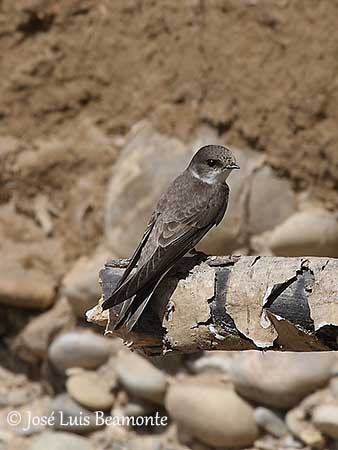
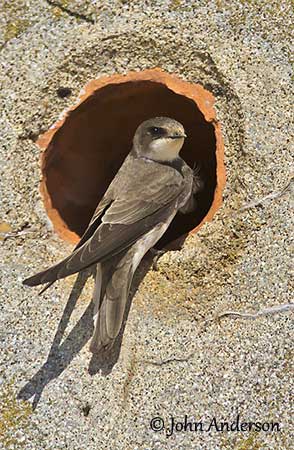
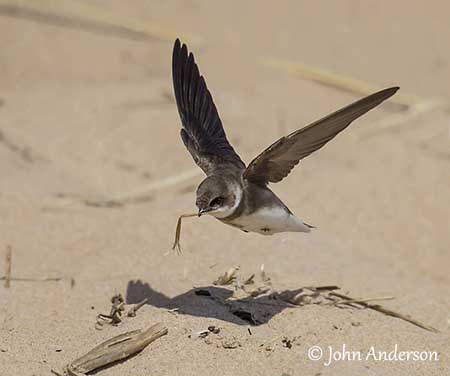
The female lays 4-5 white eggs, but the clutch size decreases from north to south. Both sexes share the incubation during 14-15 days, with female incubating at night. The male lacks the brood patch, but it may perform about half of incubation.
The chicks are brooded for the first days according to weather conditions. Both parents feed them with 20-30 visits per hour. While growing up, the chicks rush to meet parents for food, and later, they wait at nest entrance.
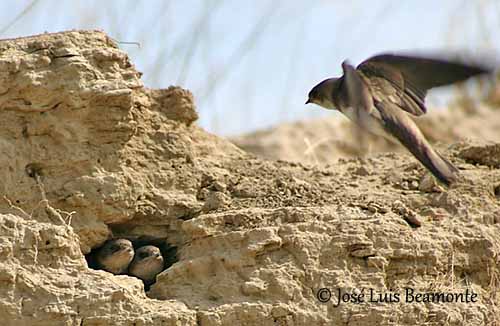
They fledge 19 days after hatching in North America, and 22 days in Scotland. They are still fed by parents at the burrow for 4-5 days or up to a week. They gather in crèches during the day, and roost in burrows at night, but not necessarily their own burrow.
Bad weather, flooding and predation are the main causes of nest failures.
PROTECTION / THREATS / STATUS:
The Sand Martin is relatively common throughout its wide range. The North American populations appear to be stable, although declines are reported in California where this species is considered as Threatened, and Kentucky where it is a Species of Special Concern.
Numerous suitable breeding sites are ephemeral according to the erosion. However, road-building and quarries provide new nest-sites.
The global population is estimated to number > 50,000,000 individuals (2004), and the Sand Martin is currently evaluated as Least Concern.
